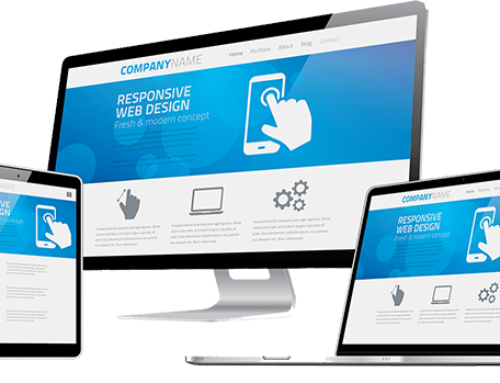As we head into 2025, it’s crucial to adapt your SEO strategies to remain competitive. With the growing importance of AI tools, enhanced content optimization, and the ever-evolving search engine algorithms, these SEO tips will help you stay ahead.
1. Leverage AI-powered Search
AI technologies, such as ChatGPT and Google Gemini, are transforming search engine interactions. By focusing on providing clear, concise, and well-structured answers, businesses can cater to these AI-driven searches.
Actionable Steps:
• Align your content to answer common questions that AI tools like ChatGPT generate.
• Optimize headings for user intent and ensure your content is easy to digest.
2. Prioritize E-E-A-T to Build Trust
Google’s focus on Experience, Expertise, Authority, and Trustworthiness (E-E-A-T) is now more important than ever for building credibility in your content.
Actionable Steps:
• Enhance author bios with credentials and relevant expertise.
• Provide authentic data and real-world examples to strengthen trust.
3. Optimize for Zero-Click Searches
Zero-click searches, such as featured snippets and People Also Ask (PAA), are becoming more common. Optimize your content to appear directly in search results.
Actionable Steps:
• Use structured data and write concise, direct answers.
• Format your content into easy-to-read lists, tables, or steps to fit common snippet styles.
4. Implement Topic Clusters for Improved Relevance
Topic clusters improve content relevance and SEO by creating a clear content structure that signals authority on specific subjects.
Actionable Steps:
• Develop pillar pages for broad topics and link them to detailed subtopics.
• Regularly update content to keep it fresh and relevant to users.
5. Enhance Page Experience for Better Engagement
Google’s Core Web Vitals emphasize the importance of fast, mobile-friendly, and seamless web experiences. A slow website can harm your rankings and user engagement.
Actionable Steps:
• Optimize images, use a content delivery network (CDN), and compress large files to speed up loading times.
• Ensure your website is mobile-responsive and easy to navigate across devices.
6. Monitor Competitor Strategies
Keep track of competitor movements to discover keyword opportunities, gaps in content, and backlink chances.
Actionable Steps:
• Use keyword analysis tools to spot keywords your competitors rank for but you don’t.
• Analyze high-authority backlinks your competitors have and develop similar outreach strategies.
7. Use AI for Content Creation Without Compromising Quality
AI tools like ChatGPT can significantly speed up content creation, but it’s crucial to maintain human oversight to ensure quality.
Actionable Steps:
• Use AI to generate content ideas and outlines but refine the drafts manually.
• Optimize SEO elements like titles and meta descriptions using AI-generated recommendations.
8. Optimize for Visual Search
With the rise of visual search, especially through platforms like Google Lens, optimizing images for search is more critical than ever.
Actionable Steps:
• Use descriptive alt text with relevant keywords for all images.
• Ensure images have geotags for local SEO and are named with relevant keywords.
9. Repurpose High-Performing Content
Repurposing top-performing content allows you to reach new audiences and maximize existing efforts.
Actionable Steps:
• Convert blog posts into videos, podcasts, or infographics to reach different audience segments.
• Update older content with fresh data or trends to give it new life.
10. Monitor Real-Time Keyword Trends
Stay ahead of emerging trends by constantly monitoring keyword activity. Tools like Google Trends provide valuable insights into shifts in user behavior.
Actionable Steps:
• Track trending keywords and adjust your content strategy accordingly.
• Combine social listening tools to spot discussions on trending topics within your industry.
11. Optimize for Voice Search Queries
With the increasing use of voice search, optimizing your content for spoken queries is essential.
Actionable Steps:
• Use conversational language that mirrors how people ask questions out loud.
• Structure your content in FAQ format to directly address common voice search queries.
12. Focus on User Intent to Drive Engagement
Understanding user intent is key to improving user engagement and aligning your content with searcher needs.
Actionable Steps:
• Identify the type of intent behind a search—informational, transactional, or navigational—and create tailored content.
• Use heatmaps and session recording tools to analyze user interactions and improve site content.
13. Update Old Content for Quick Wins
Refreshing outdated content can quickly boost rankings by aligning with current search trends and user expectations.
Actionable Steps:
• Use analytics tools to find pages with declining traffic and update them with fresh content.
• Replace outdated statistics, broken links, and refine content to reflect the latest trends.
14. Maximize Social Signals
Social media interactions indirectly affect SEO. Amplifying your content through social shares can improve visibility and drive traffic.
Actionable Steps:
• Optimize content for sharing by creating eye-catching headlines and visuals.
• Engage with your audience on social media platforms to boost brand visibility.
15. Identify and Fix Duplicate Content
Duplicate content can negatively impact SEO rankings. Cleaning up duplicates ensures that the correct pages get indexed.
Actionable Steps:
• Use SEO tools to find duplicate pages, titles, and meta descriptions.
• Consolidate duplicate content using 301 redirects or canonical tags.
16. Diversify Traffic Sources
Relying on Google for all traffic can be risky. Diversify traffic sources to maintain visibility even during algorithm shifts.
Actionable Steps:
• Optimize for alternative search engines like Bing and DuckDuckGo.
• Leverage social media platforms, email newsletters, and other channels to drive consistent traffic.
17. Build Links with Personalized AI Outreach
AI can enhance link-building strategies by automating outreach with personalized messages tailored to relevant websites.
Actionable Steps:
• Use AI tools to identify high-value websites for link-building and create tailored outreach emails.
• Analyze responses to improve future outreach strategies.
18. Leverage User Behavior Insights
Understanding user behavior on your site helps identify problem areas and opportunities for improvement.
Actionable Steps:
• Use heatmaps and session recordings to see where users are clicking or abandoning pages.
• Conduct A/B testing on key pages to optimize for better conversion rates.
19. Focus on Data-Driven SEO with Predictive Analytics
Predictive analytics can help forecast trends and optimize your content strategy in advance.
Actionable Steps:
• Analyze historical data and user behaviors to anticipate trends.
• Leverage tools to segment your audience and target emerging queries.
20. Strengthen Brand Recognition
Brand consistency is key to both user trust and SEO. A strong, recognizable brand leads to higher click-through rates and engagement.
Actionable Steps:
• Maintain a consistent voice and visual style across your content and advertising.
• Build a loyal audience by interacting with your followers on social media.
21. Strengthen Technical SEO with Regular Audits
Regular technical SEO audits help identify and fix issues that could be harming your search rankings.
Actionable Steps:
• Perform regular site crawls to identify crawl errors, broken links, and orphaned pages.
• Simplify your site structure to ensure important pages are easily accessible.
22. Implement a Content Calendar for SEO Success
A content calendar helps ensure consistent publishing, leading to improved SEO results.
Actionable Steps:
• Plan content around seasonal trends and important industry events.
• Use project management tools to stay organized and consistent in publishing.
23. Improve Site Navigation with Internal Link Optimization
An optimized internal linking structure helps both users and search engines navigate your website easily.
Actionable Steps:
• Identify key content and ensure it is well-linked across your website.
• Replace generic anchor text with descriptive links to improve both user experience and SEO.
24. Automate SEO for Effortless Maintenance
Automation tools can help you maintain your SEO efforts, even during busy periods.
Actionable Steps:
• Set up automated rank tracking and alerts for SEO issues.
• Pre-schedule content updates to maintain your site’s relevance without extra effort.



